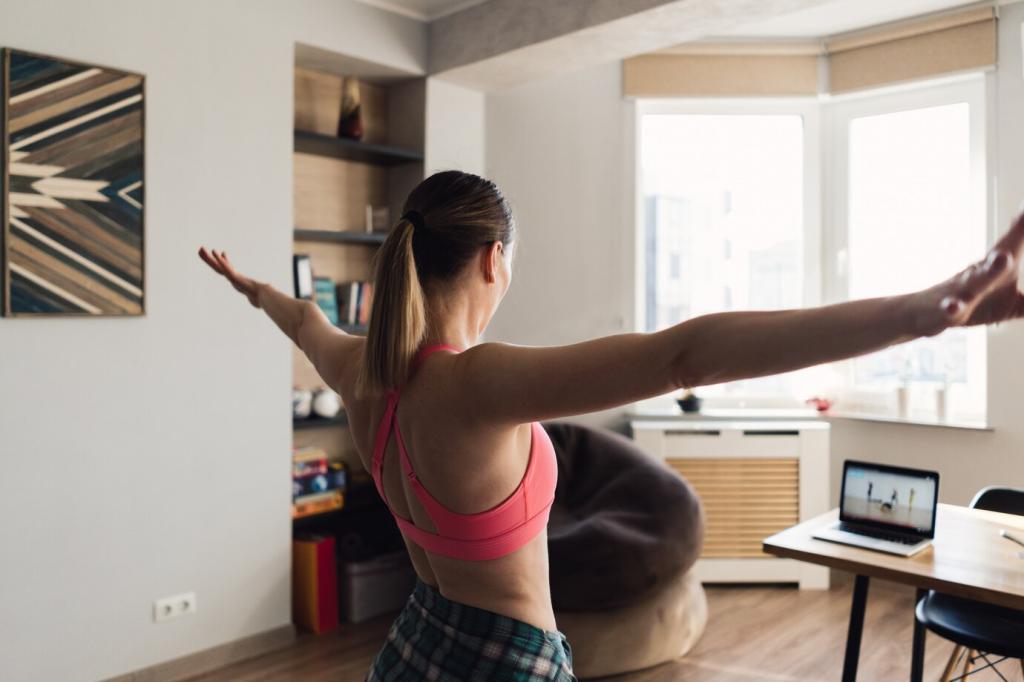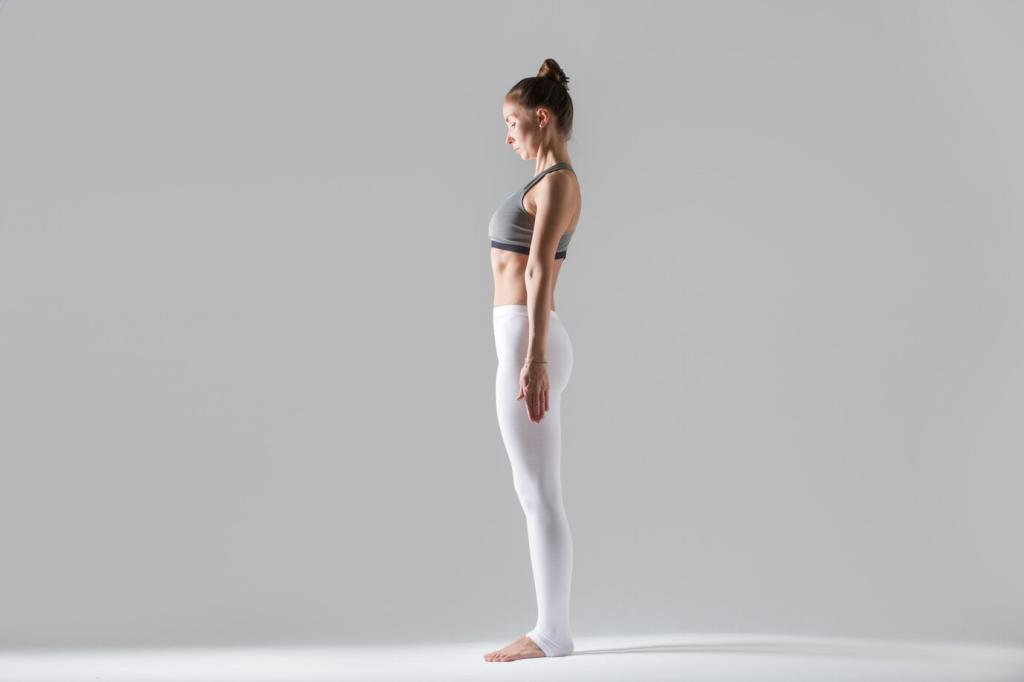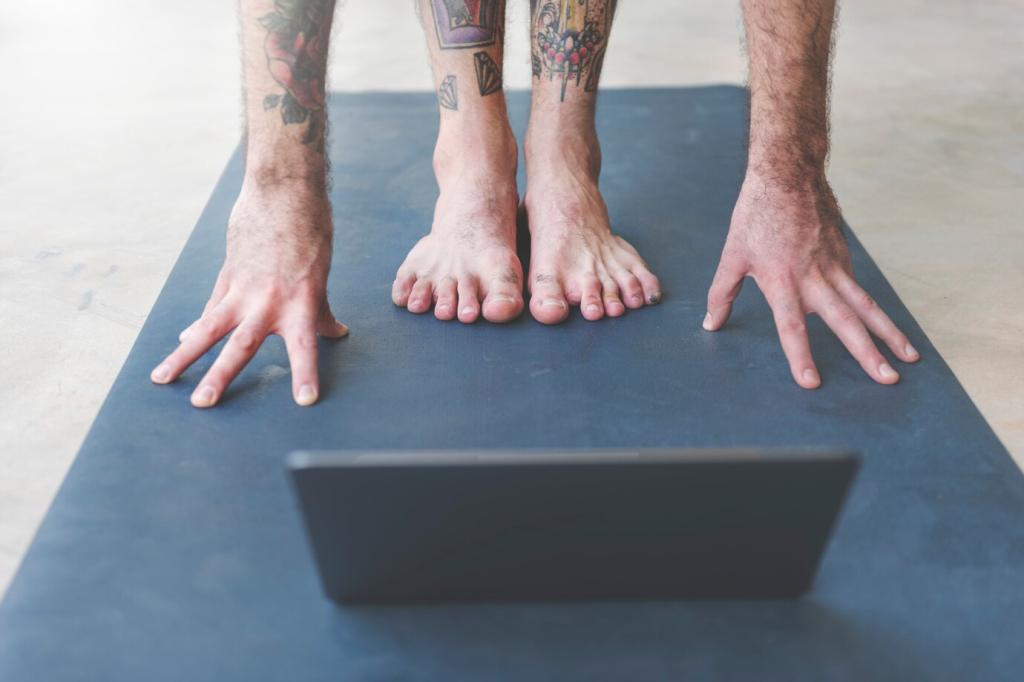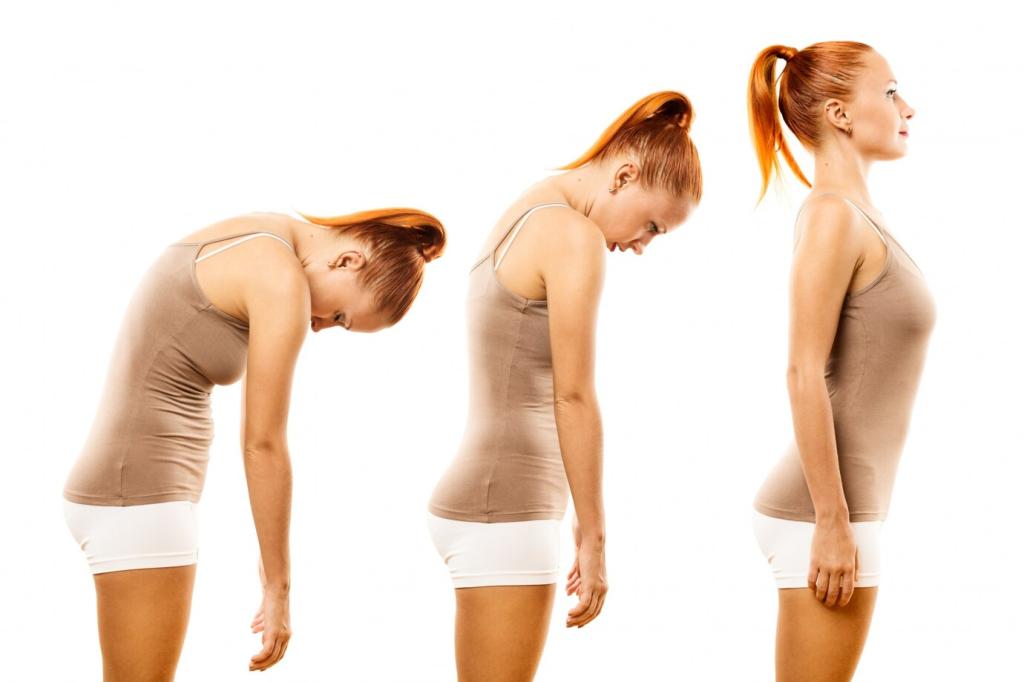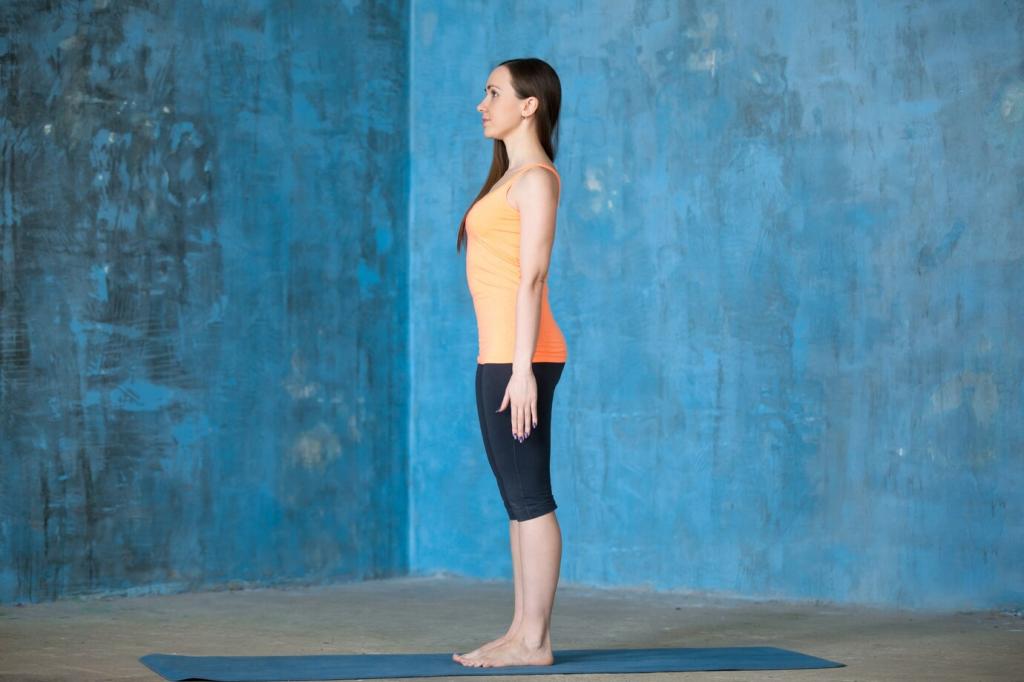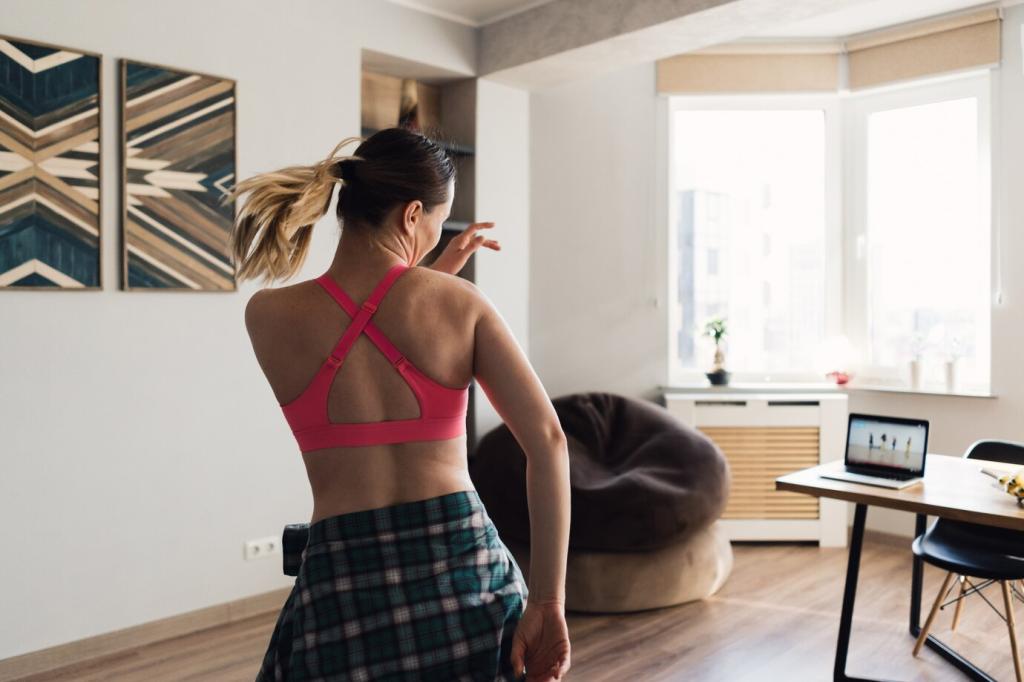Move More: Variety Prevents Fatigue
Many ergonomics guides suggest roughly twenty minutes sitting, eight standing, and two moving in a repeating cycle. Adjust to your body and tasks. The point is simple: alternate often, and weave short, refreshing motion into every hour.
Move More: Variety Prevents Fatigue
Roll your shoulders, shift weight heel-to-toe, perform gentle calf raises, and soften your knees periodically. These small motions keep tissues hydrated, reduce stiffness, and help you maintain a neutral spine without rigidly freezing in one position.

